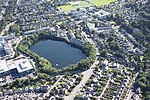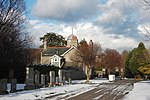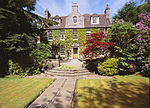Gordon Highlanders Museum
Museums in AberdeenMusical instrument museums in ScotlandRegimental museums in ScotlandUse British English from May 2017

The Gordon Highlanders Museum is based in Aberdeen, Scotland and celebrates the story of the Gordon Highlanders regiment, which originated as the 92nd (Gordon Highlanders) Regiment of Foot in 1794, merged with the 75th (Stirlingshire) Regiment of Foot to form the Gordon Highlanders in 1881 and was then amalgamated into a new larger unit of the British Army in 1994. It is a 5-star Scottish Tourist Board attraction.
Excerpt from the Wikipedia article Gordon Highlanders Museum (License: CC BY-SA 3.0, Authors, Images).Gordon Highlanders Museum
Viewfield Road, Aberdeen City Airyhall
Geographical coordinates (GPS) Address Phone number Website External links Nearby Places Show on map
Geographical coordinates (GPS)
| Latitude | Longitude |
|---|---|
| N 57.1376 ° | E -2.1464 ° |
Address
The Gordon Highlanders Museum
Viewfield Road
AB15 7XH Aberdeen City, Airyhall
Scotland, United Kingdom
Open on Google Maps








